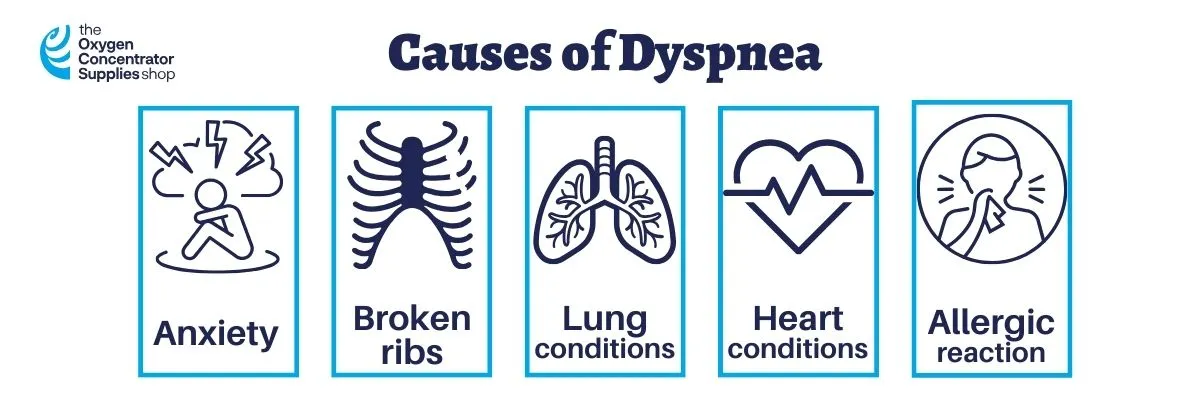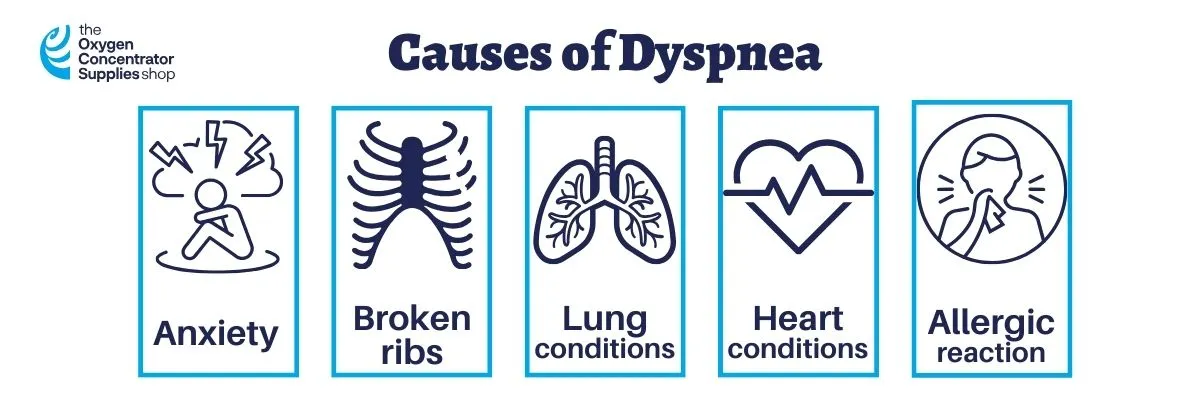

Dyspnea (Shortness Of Breath)
The clinical definition of shortness of breath is dyspnea. The average adult can take up to 30,000 breaths a day, so compromised breathing is acutely felt, even over a short period of time. While physical exertion or a cold may make breathing difficult temporarily, long-term dyspnea is often a sign of a more serious illness.
What Causes Dyspnea?


A variety of illnesses and conditions can cause dyspnea.
- Short-term causes may include anxiety, an asthma attack, or a severe allergic reaction.
- Long-term causes may include the onset of respiratory illnesses such as COPD and pneumonia, or anemia.
- Injuries such as broken ribs and collapsed lungs can also bring on dyspnea.
Can Exercise Help With Shortness Of Breath Or Dyspnea?
Exercises that build strength can positively impact shortness of breath. Strength exercises, such as squatting, balancing, and others, give you the benefits of exercise, but your lungs and heart don't have to work as hard as they do with cardio workouts.
What is Progressive Dyspnea?
Long-term and chronic dyspnea symptoms that worsen over time are diagnosed by doctors as progressive dyspnea. Progressive respiratory illnesses such as cystic fibrosis and lung cancer can cause shortness of breath to become more severe.
What is Paroxysmal Dyspnea?
Episodes of shortness of breath, especially at night are called paroxysmal dyspnea. An attack of paroxysmal dyspnea can cause a person to wake suddenly gasping for air. While frightening, paroxysmal dyspnea may indicate more manageable medical conditions such as sleep apnea. However, it is recommended that any repeated instances of paroxysmal dyspnea be reviewed by a doctor. Consistent symptoms of shortness of breath can account for a range of medical conditions from mild to severe, so it’s best to play it safe.
What are the Signs & Symptoms of Dyspnea?
Identifying dyspnea as a chronic issue is the first step toward treatment. Look for these telltale indicators of a respiratory problem.
- A feeling of being out of breath on a regular basis, even when you have not exerted yourself physically.
- A feeling of tightness in the chest
- Difficulty sleeping
- A feeling of suffocation, as if you cannot get enough air.
Treatments For Dyspnea
Your doctor must first diagnosis dyspnea and its severity. The use of a pulse oximeter will indicate blood oxygen levels as a clear sign you are not receiving enough air through your lungs into your blood. Blood tests, X-rays and EKGs may be other tests to track down the cause of your dyspepsia.
Once diagnosed, your doctor may prescribe an inhaler for infrequent episodes of dyspepsia. For more chronic conditions, supplemental oxygen may be prescribed. Supplemental oxygen helps deliver more oxygen into your lungs and alleviate the symptoms of dyspnea, especially if they are frequent.
Supplemental oxygen is available in oxygen tanks, which require replenishment over time once the oxygen is used up, or with an oxygen concentrator. Oxygen concentrators change the surrounding air into pure oxygen, so you never run out of your supply. They are often preferred by those managing a respiratory illness as they are safer and easier to use.
The Oxygen Concentrator Supplies Shop
You can find both home oxygen concentrators and portable oxygen concentrators at The Oxygen Concentrator Supplies Shop. In addition, you can select pulse oximeters to check blood oxygen levels at home and other essential supplies from masks to nasal cannulas.
For help selecting an oxygen concentrator to treat your dyspnea speak to our knowledgeable customer care team. We’re here to answer any questions. Give us a call at 888-941-1688 or email us at contact@oxygenconcentratorsupplies.com.



